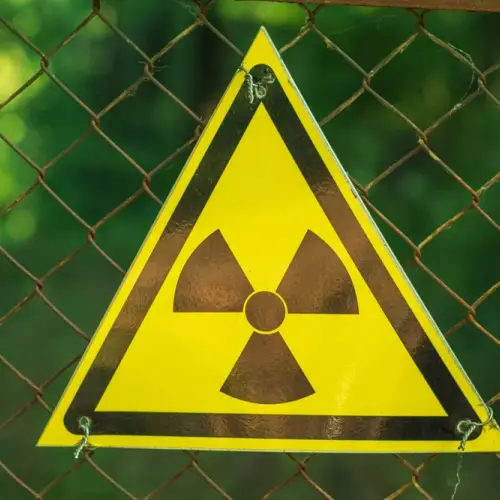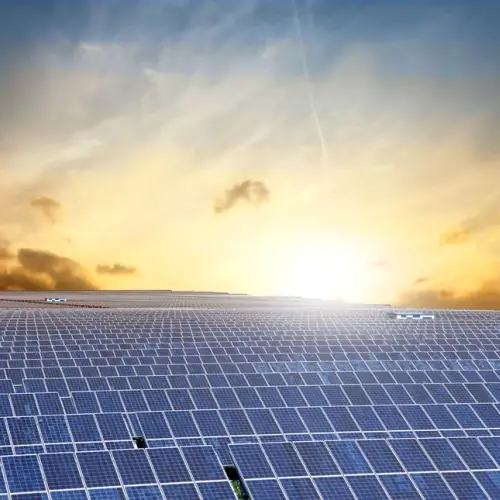
In a world that is increasingly aware of the need to find sustainable energy solutions, the discussion on the most suitable energy sources becomes crucial. Nuclear energy and solar energy stand out as two of the most significant options in this conversation. Each offers a series of advantages and challenges that make them unique in the global energy landscape.
For a generation that grew up in the digital age, savvy about technology and concerned about environmental impact, it is vital to understand the differences and similarities between these two energy sources. How do they work? What are their efficiencies and costs? What implications do they have for the environment and safety? By answering these questions, we can make informed decisions about our energy future.
In this analysis, we will explore these two energy sources in depth, comparing their origin and operation, energy efficiency, environmental impact, safety, costs and viability. Through this comparison, we will provide a clear and neutral view that helps to better understand the role each can play in our effort to achieve a sustainable energy future.
Comparison table: solar vs nuclear
Let's start with a comparison table between solar energy and nuclear energy. We will then go into a more in-depth explanation of each of these points.
|
Aspect |
Nuclear energy |
Solar energy |
|
Origin and operation |
Conversion of solar radiation into electricity using photovoltaic panels or thermal systems |
|
|
Energy efficiency |
High efficiency , high energy production per unit of fuel |
Lower efficiency (15%-22%), depends on weather conditions and geographic location |
|
Emissions |
Low greenhouse gas emissions during operation |
Minimal emissions during operation, environmental impact in panel manufacturing |
|
Environmental impact |
Uranium mining and waste management have a significant impact |
Lower comparative impact, but panel manufacturing and recycling affect the environment |
|
Waste |
Radioactive waste requires safe handling and storage for thousands of years |
Solar panels have a lifespan of 20-30 years and must be recycled |
|
Security |
Risk of catastrophic accidents (eg, Chernobyl, Fukushima) |
Minimal risks, mainly mechanical and electrical |
|
Startup costs |
Significant reduction in installation costs, accessible for small and large projects |
|
|
Operating costs |
Relatively low once operational |
Low maintenance, but depends on location and solar conditions |
|
Viability and scalability |
Nuclear plants require large investments and construction time |
Fast installation, scalable from residential systems to solar parks |
|
Availability of resources |
Uranium is a finite resource |
The sun is a renewable and abundant source of energy |
|
Climate dependence |
It does not depend on the weather |
It depends on solar radiation, limited in areas with little sunlight or at night. |
Nuclear energy
 1. Origin and operation: Nuclear energy is produced by the fission of uranium or plutonium atoms in nuclear reactors. This process releases an enormous amount of energy in the form of heat, which is used to generate steam and, in turn, electricity through turbines.
1. Origin and operation: Nuclear energy is produced by the fission of uranium or plutonium atoms in nuclear reactors. This process releases an enormous amount of energy in the form of heat, which is used to generate steam and, in turn, electricity through turbines.
2. Energy efficiency: Nuclear energy is highly efficient. A small amount of uranium can generate a large amount of electricity, making it a dense and powerful energy source.
3. Emissions and the environment: One of the major benefits of nuclear energy is its low greenhouse gas emissions during operation compared to fossil fuels. However, uranium mining and nuclear waste management have a significant environmental impact.
4. Waste and safety: Nuclear waste is highly radioactive and requires safe handling and storage for hundreds of years. The safety of nuclear power plants is a constant concern due to the risk of accidents, such as those at Chernobyl and Fukushima, which can have catastrophic consequences.
5. Costs and feasibility: Nuclear plants are expensive and take many years to build. However, once operational, operating costs are relatively low. High initial investment and regulatory challenges can be an obstacle to the expansion of nuclear power.
Solar energy
 1. Origin and operation: Solar energy is obtained from the sun's radiation using photovoltaic solar panels or solar thermal energy systems. Solar panels convert sunlight directly into electricity, while thermal systems use the sun's heat to generate steam and electricity.
1. Origin and operation: Solar energy is obtained from the sun's radiation using photovoltaic solar panels or solar thermal energy systems. Solar panels convert sunlight directly into electricity, while thermal systems use the sun's heat to generate steam and electricity.
2. Energy efficiency: The efficiency of solar panels varies, generally between 15% and 22%. Although it is lower than nuclear energy, the technology is continually improving. Efficiency also depends on geographic location and weather conditions.
3. Emissions and the environment: Solar energy is one of the cleanest sources of energy. It does not produce greenhouse gas emissions during its operation. The manufacturing of solar panels has an environmental impact, but it is minor compared to fossil fuels and uranium mining.
4. Waste and safety: Solar panels have a lifespan of 20 to 30 years, after which they must be recycled. Solar energy is safe, with minimal risks to human health and the environment compared to nuclear energy.
5. Costs and feasibility: Solar panel costs have dropped dramatically over the past decade, making them more affordable. Installation is relatively quick and can be scaled from small residential systems to large solar farms. However, solar power is dependent on sunlight, which can be a limitation in areas with little solar radiation or at night.
Direct comparison
Efficiency and energy production: Nuclear energy is much more efficient in terms of energy production per unit of fuel compared to solar. However, solar is a renewable energy source, while uranium is a finite resource.
Environmental impact: Solar energy has a minor environmental impact during operation, but the production and disposal of solar panels are not without negative effects. Nuclear energy, although clean in terms of emissions during operation, presents significant challenges in waste management and risks of accidents.
Safety: Solar power is significantly safer than nuclear power. It does not pose radiation risks or catastrophic disasters. The main risks of solar power are mechanical and electrical, compared to the potential dangers of a nuclear power plant.
Costs: The initial investment in nuclear power is extremely high, while solar costs have decreased, making it more accessible for small and large-scale projects. Solar also offers the advantage of energy decentralization, allowing individuals to generate their own electricity.